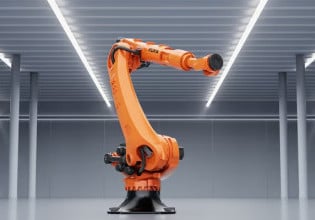Honeywell Aerospace Produced and Installed First Flight-Critical Engine Part Using Additive Manufacturing
The flight-critical engine part is an FAA certified #4/5 bearing housing for an ATF3-6 turbine engine.
3D printing obsolete parts is now an ideal option for keeping older model machines and vehicles running. Honeywell has successfully created an FAA certified #4/5 bearing housing for an ATF3-6 turbine engine. This is important due to this housing being obsolete.
This certification is a milestone in the aviation industry due to additive manufacturing being a cost-effective and increasingly reliable manufacturing method.
This engine part is essential for Honeywell and companies alike because it represents the additive manufacturing industry's potential and capacity.
Honeywell Partners with Federal Aviation Administration
Honeywell has been working with the Federal Aviation Administration on multiple 3D printed parts to determine what it takes for a 3D printed part to be certified for such a crucial purpose. This bearing housing needs to be approved for several cycles in this engine.
This component's failure could result in the malfunction of the turbine and put the passengers of the plane at risk. The skepticism of this part and other flight-critical parts made with AM is understandable due to the industry's novelty.
"This is a major milestone for Honeywell because it demonstrates the maturity of our additive manufacturing operations and paves the way for us to print more certified, flight-critical parts in the future," said Jon Hobgood, vice president of manufacturing engineering, Honeywell Aerospace.
The Part: FAA Certified #4/5 Bearing Housing
The crucial part of the discussion is meant for an ATF3-6 turbine engine. This engine is on most Dassault Falcon 20G aircrafts. This particular engine has been in production by Garrett and certified since 1967. Since this engine has been reliable in aircrafts for over 50 years, it has peaked in its development.

3D-printed bearing housing paves the way for future certifications. Image courtesy of Honeywell.
With the ever-advancing age of technology, the engine will eventually cease production. Ceasing in production doesn't mean that this engine will stop running.
Utilizing additive manufacturing to help produce obsolete parts in this engine is becoming increasingly common as it proves itself cheaper than previous methods used to produce it. This means that it is no longer required to find the tooling used to create a #4/5 bearing housing.
ATF3-6 TurboFan Engine
Now that a major organization certifies this method, the aviation and other industries will look toward additive manufacturing to start mass-producing parts.
"Though there aren't many in service, Honeywell is responsible for supporting and maintaining these engines," stated Jon Hobgood, Vice President of Manufacturing Engineering, Honeywell Aerospace. "We had to find a way to address these supply chain issues and keep these aircraft flying."
Industry 4.0 has kicked open the door for automated, 3D printing, and layer adhesion rendering the process considerable for getting the job done. The parts being made are no longer weak and brittle plastic concepts. They are now metallurgic, material tested, and iterated entities that can withstand force as well as long cycle times. These material properties will soon be tested at universities throughout the world if they have not already.
The otherwise complex problems that engineers ran into in the past can now be solved using these parts. 3D printing is being implemented into STEAM programs in schools. Children in elementary schools are intrigued and are already using these devices to learn about science and engineering.
Future generations will most likely use additive manufacturing to create something even more powerful.






